Be #WinterReady -- know your winter weather risk, stay informed, travel with supplies and caution, and take steps now to prepare before storms arrive.
Winter Storms & Extreme Cold
Be winter ready so you and your loved ones can stay safe, warm, and informed at home and on the road this winter. From snow removal tips to guides on preparing emergency kits and information on where to seek shelter from the cold, Montgomery County is here to help you prepare for winter storms and extreme cold.
Winter Weather Tips
Winter weather may include freezing rain, ice, heavy snow, 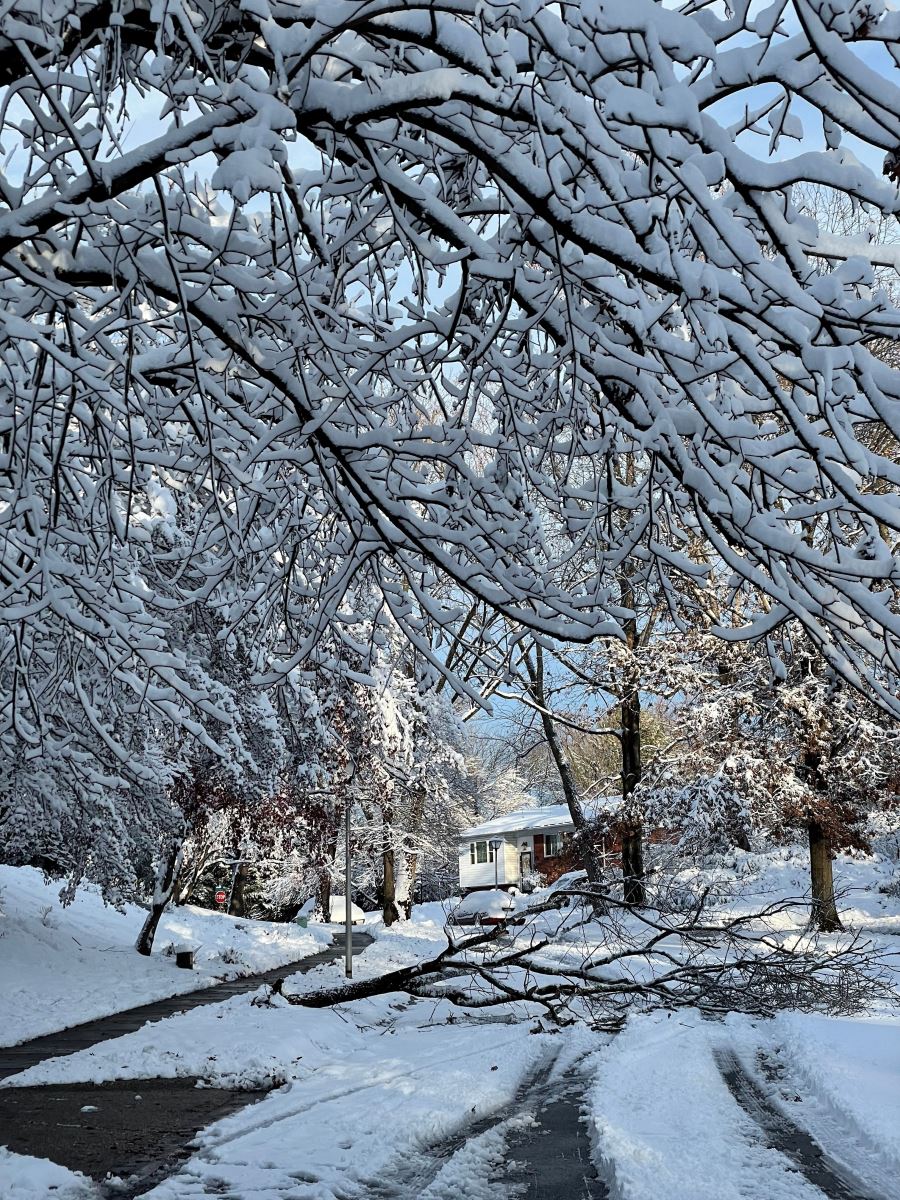 high winds, or a combination of all these conditions. It can cause power outages that last for days or weeks, making it hard to keep warm or access food and medical care. Winter storms can take out communication networks and make travel very dangerous.
high winds, or a combination of all these conditions. It can cause power outages that last for days or weeks, making it hard to keep warm or access food and medical care. Winter storms can take out communication networks and make travel very dangerous.
House fires and carbon monoxide-related deaths increase with the cold weather and often, dangerous driving conditions like black ice are difficult or impossible to see, increasing the risk of accidents. During a winter storm, the best way to stay safe is to minimize travel by car. Extreme cold can be especially dangerous for those working outside, as well as older adults and those with underlying health issues, which can make them more vulnerable to hypothermia.
Dangerous driving conditions, slippery sidewalks, and bitter cold pose serious hazards, so residents are encouraged to be prepared, stay informed, and have a plan.
Stay Informed
Subscribe to Alert Montgomery to stay updated on the latest warnings and information. Alerts can be sent to one or more electronic devices, including cell phones and email accounts. For general information during a storm, check the County’s website and social media feeds and pages. For information on snow removal and roadways during the storm, visit the County Winter Storm Information Portal .
The MC311 County informational call center can answer questions and handle requests for service like downed trees that may block a county road. You can reach MC311 by calling 311 in the County or 240-777-0311, 711 for MD Relay TTY , from anywhere, Monday - Friday 7 a.m. – 7 p.m. Questions can also be asked or requests made of MC311 through their website . Often, MC311 will remain open for extended hours during periods of emergencies.
Before Snowstorms and Extreme Cold
Make a Plan, Prepare a Kit
- Prepare an emergency kit for all members
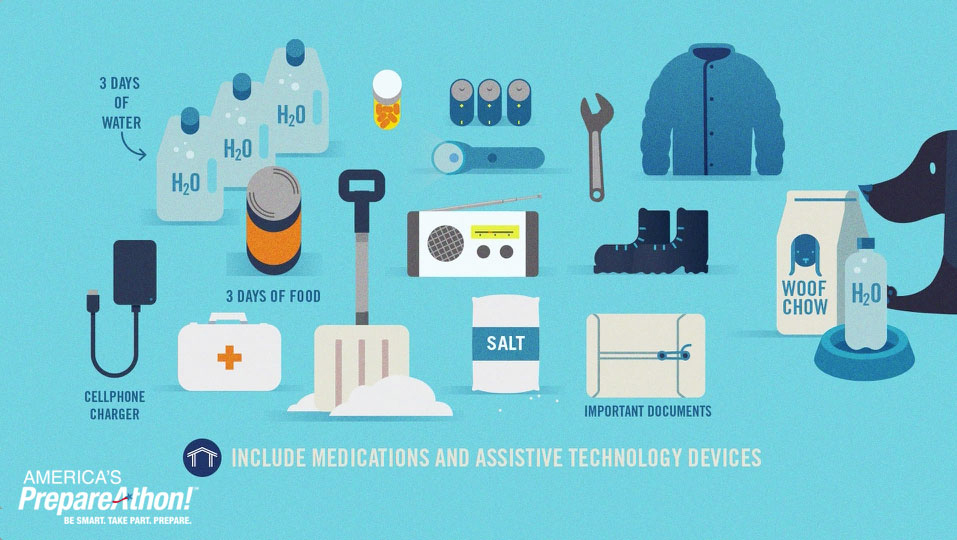 of your household with enough food, water, medications, and supplies to stay safe and self-sufficient for at least three days. Keep your kit in a bag you can take with you if you have to leave your home, and don’t forget your pets in your planning. Download a printable checklist here .
of your household with enough food, water, medications, and supplies to stay safe and self-sufficient for at least three days. Keep your kit in a bag you can take with you if you have to leave your home, and don’t forget your pets in your planning. Download a printable checklist here . - Remember to check your emergency kit at the begin of the winter to dispose of any expired food, add fresh batteries, and update any medications, documents, and supplies as your household’s needs change.
- Make a plan to ensure that you, your household, and community are better prepared, no matter where you are. Your family may not be together, so its important to plan for how you will communicate with each other in case of an emergency. Plan for how you can stay informed, shelter in place or, if needed, evacuate safely. Guides to assist with planning can be found on the Make a Plan website in eight different languages.
Stay Safe at Home
- Keep fire extinguishers on hand, and make sure
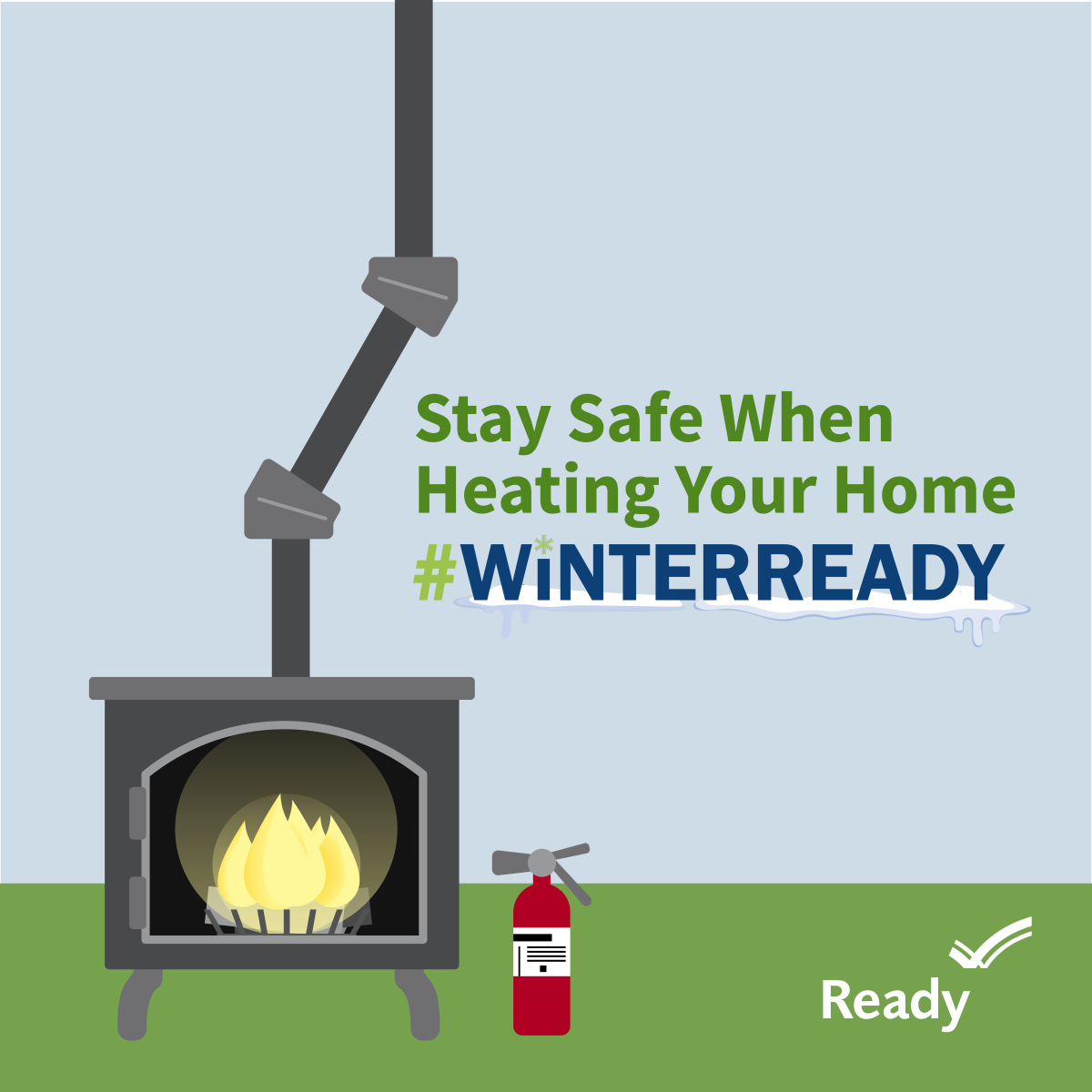 everyone in your house knows how to use them. Practice how to escape safely in case of fire. House fires pose an additional risk, as more people turn to alternate heating sources without taking the necessary safety precautions.
everyone in your house knows how to use them. Practice how to escape safely in case of fire. House fires pose an additional risk, as more people turn to alternate heating sources without taking the necessary safety precautions. - Learn how to shut off water valves (in case a pipe bursts), and how to turn off all utilities at the main valve switch/close the main gas valve if instructed by authorities during an evacuation. Make sure other members of your household learn as well.
- Carbon monoxide-related deaths are highest during colder months and are likely due to increased use of gas-powered furnaces and alternative heating, cooking, and power sources used inappropriately indoors during power outages.
- Never use a generator, grill, camp stove or other gasoline, propane, natural gas or charcoal-burning devices inside a home, garage, basement, crawlspace, or any partially enclosed area. Locate unit away from doors, windows and vents that could allow carbon monoxide to come indoors. Keep these devices at least 20 feet from doors, windows, and vents.
- Make sure you have a working carbon monoxide detector and smoke detector.
- Be fire safe by keeping candle, fireplace, and space heater safety in mind. Use electric space heaters with automatic shut-off switches and non-glowing elements. Use electronic candles or keep candles at least 12 inches away from flammable materials. Make certain fires are completely out and only dispose of ashes in a proper receptacle stored outside and away from your home. Remember to keep all heat sources at least three feet away from furniture and drapes.
- Make sure you have a cell phone with an emergency charging option (car, solar, hand crank, etc.) in case of a power failure.
- People who depend on electricity to operate medical equipment like respirators or dialysis equipment should have alternate arrangements in place in case power is out for an extended period of time. Check in with friends and relatives who may be in this situation to make sure they have a plan.
- Many power companies offer programs to provide advance notice of scheduled outages and information on how to prepare for
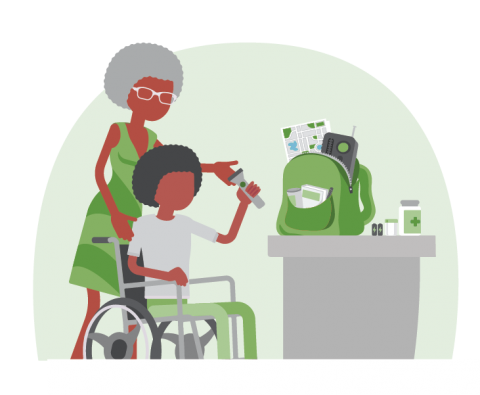 emergencies. For more information of these programs, please contact your power company or check the following links:
emergencies. For more information of these programs, please contact your power company or check the following links:
- You can find more information on how to develop a specialized plan at Planning for People with Access and Functional Needs on the OEMHS website. FEMA has special planning resources to help those with additional needs effectively prepare for emergencies and disasters.
- Plan to bring pets inside.
- Make a note of the contact information for your utility provider in case of a power outage so you can report your outage and check on restoration estimates.
Stay Safe of the Road
.png)
- Prepare an emergency kit for your car. In addition to the essentials, winterize the kit by adding jumper cables, flares or reflective triangles, an ice scraper, car cell phone charger, blankets or extra warm clothing, and sand or cat litter (for better tire traction in ice or snow).
- Fully winterize your vehicle: Have a mechanic check antifreeze, brakes, battery and ignition system, heater and defroster, tires, and windshield wipers to ensure they are in good shape. Keep your gas tank at least half full and make sure your oil, antifreeze and windshield wiper fluid levels are full.
During Snowstorms and Extreme Cold
- Stay indoors and only travel if absolutely necessary. If you must drive,
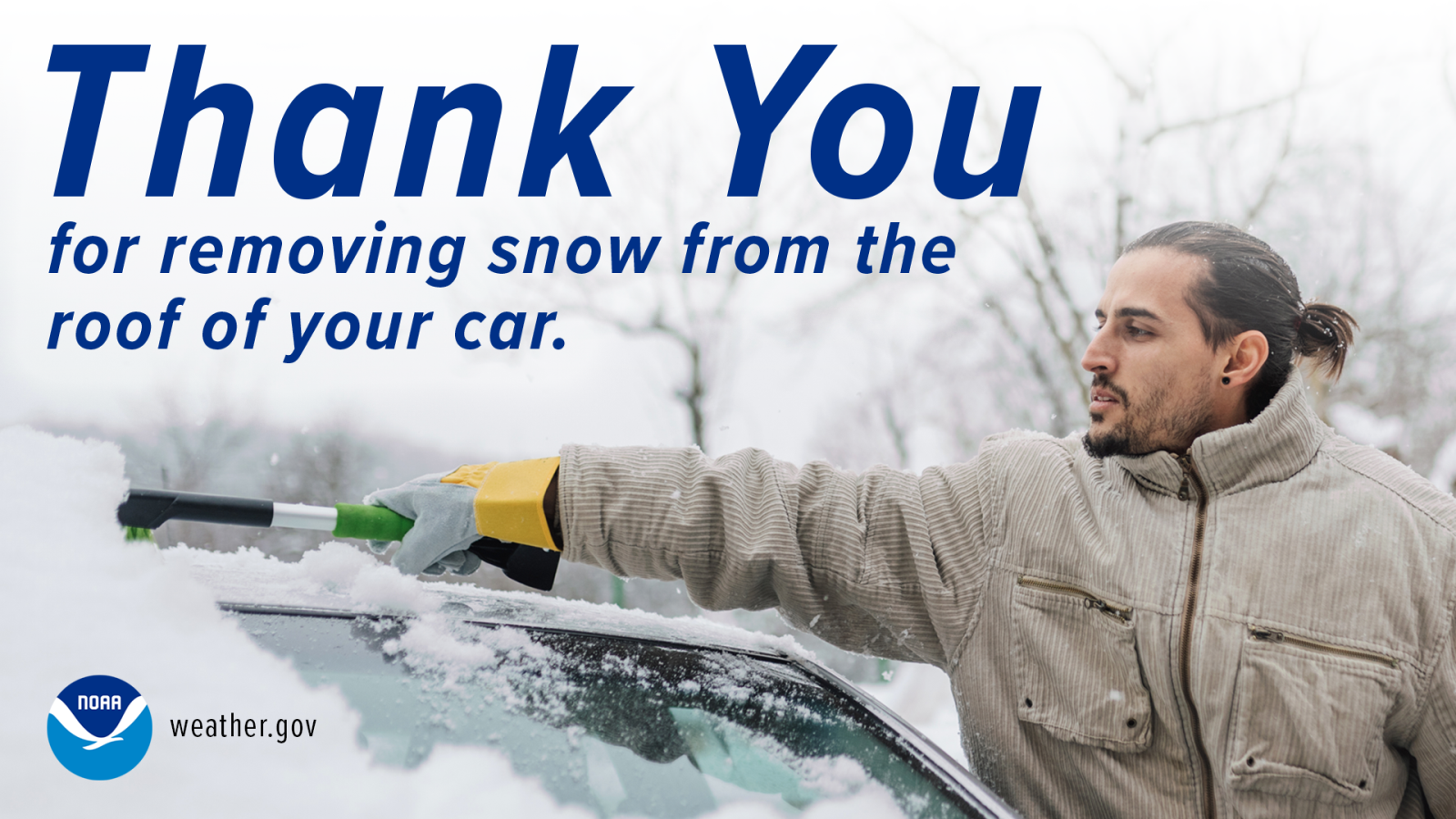 remember to clear snow off the roof of your car. Travel in the day and, if possible, don’t travel alone. Keep others informed of your schedule and your route, stay on main roads and avoid back road shortcuts. Make sure you have an emergency kit in your car with winter-specific additions like an ice scraper, extra blankets, sand or cat litter for traction, and jumper cables.
remember to clear snow off the roof of your car. Travel in the day and, if possible, don’t travel alone. Keep others informed of your schedule and your route, stay on main roads and avoid back road shortcuts. Make sure you have an emergency kit in your car with winter-specific additions like an ice scraper, extra blankets, sand or cat litter for traction, and jumper cables. - Check the County’s Winter Storm Information Portal for information on snow plowing schedules, where to park your car safely, how to identify county-maintained versus state-maintained roadways, and more.
- Walk carefully on snowy or icy walkways.
- Montgomery County’s snow shoveling law requires all property owners to clear snow and ice from public sidewalks adjacent to their properties within 24 hours after the snow stops falling. Don’t forget to help your neighbors who may not be able to shovel safely themselves.
- Avoid overexertion when shoveling snow. Overexertion can bring on a heart attack—a major cause of death in the winter. Use caution, take breaks, push the snow instead of lifting it when possible, and lift lighter loads.
- When shoveling, help firefighters maintain quick access to hydrants by clearing show three feet around hydrants.
- Keep dry. Change wet clothing frequently to prevent a loss of body heat. Wet clothing loses all of its insulating value and transmits heat rapidly.
- If you must go outside, wear several layers of loose-fitting, lightweight, warm clothing rather than one layer of heavy clothing. The outer garments should be tightly woven and water repellent.
- Wear mittens, which are warmer than gloves.
- Wear a hat and cover your mouth with a scarf to reduce heat loss.
- Maintain ventilation if using kerosene heaters or a generator. Refill heaters outside and keep them at least three feet from flammable objects.
Montgomery County Health and Human Services staff, as well as community-based providers, will continue to reach out to homeless community members to urge them to seek shelter when hypothermia or cold emergency alerts are activated. Residents concerned about the well-being of a homeless individual can call the 24-hour Line at 240-907-2688. Outreach partners will attempt to locate the individual and offer resources and support.
Individuals in need of daytime warming centers should call the 24-hour Homeless Resource Line at 240-907-2688 for location information.
Individuals in need of Emergency Shelter should call the Crisis Center at 240-777-4000 or present themselves at 1301 Piccard Drive, Rockville, MD 20850. A screening will be completed.

For additional information on County services contact MC311 by calling 3-1-1 or 240-777-0311 between 7 a.m. and 7 p.m. weekdays, or through the MC311 website which is available to receive emails 24/7.
During a period of extreme cold temperatures, animals must not be left outside unattended. Make a plan now to bring pets inside during extremely cold weather. Leaving animals outside unattended in these conditions may be considered an act of cruelty and pet owners could be charged and fined accordingly. Executive Regulation 17-17 requires that during a Cold Emergency Alert, additional measures must be taken to provide adequate heating of outdoor housing for an animal as described in Section 3.0. These additional measures must be approved by the Executive Director of the Montgomery County Office of Animal Services.
During a period of extreme cold temperatures, 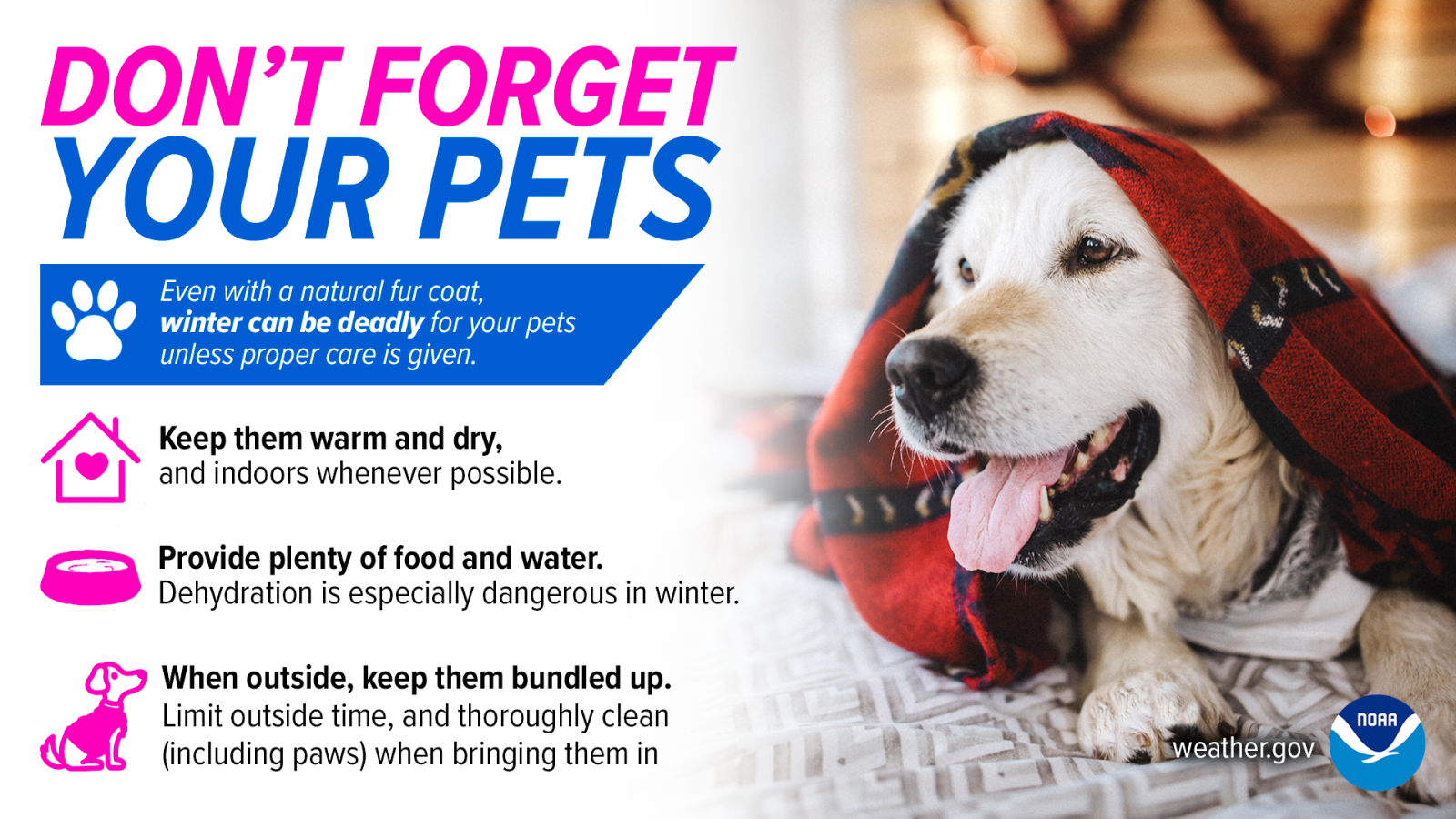 the Montgomery County Office of Animal Services (OAS) enforces Executive Regulation 17-17, Anti-Cruelty Conditions for Dogs and Other Pets. The Executive Director of OAS is authorized to provide resident notification when animals must not be left outside unattended. Unattended tethering of dogs is not allowed at any time.
the Montgomery County Office of Animal Services (OAS) enforces Executive Regulation 17-17, Anti-Cruelty Conditions for Dogs and Other Pets. The Executive Director of OAS is authorized to provide resident notification when animals must not be left outside unattended. Unattended tethering of dogs is not allowed at any time.
Be aware of the early signs of hypothermia in pets including shivering, muscle stiffness, lethargy, difficulty walking, cool body surfaces, and confusion. If you suspect a pet may be suffering from hypothermia move them to a warm place immediately and seek veterinary treatment.
Animals that usually spend long periods of time outdoors must have access to shelter to properly protect them from the elements; however, during periods of extreme cold they must be brought inside or have an adequate heat source. The penalty for this violation is a $500 fine. Animal Service Officers will be on-call, patrolling neighborhoods and responding to any animal-related emergencies. If you see an animal left outside that appears to be in danger, call the police non-emergency number at 301-279-8000.
Know the terms
- Winter Weather Advisory - cold, ice, and snow are expected.
- Winter Storm Watch - severe weather is possible in the next 24 - 48 hours.
- Tune in to your NOAA Weather Radio, local radio, TV, or other news sources for more information.
- Monitor alerts, check your emergency supplies, and gather any items you may need if you lose power.
- Winter Storm Warning - severe weather conditions have begun or will begin soon.
- Blizzard Warning - Sustained winds or frequent gusts to 35 miles per hour or greater and considerable amounts of falling or blowing snow (reducing visibility to less than a quarter mile) are expected to prevail for a period of three hours or longer.
- Frost/Freeze Warning - Below freezing temperatures are expected.
- Freezing Rain - Rain that freezes when it hits the ground, creating a coating of ice on roads, walkways, trees, and power lines.
- Sleet - Rain that turns to ice pellets before reaching the ground. Sleet also causes moisture on roads to freeze and become slippery.
- Wind Chill - Windchill is the temperature it “feels like” when you are outside.
Cold-Related Illness
Extreme cold poses a serious danger that can bring on health emergencies in susceptible people, particularly the very young, seniors, those without shelter, those with underlying health conditions, or those with poorly insulated homes or an inability to heat their homes. Pets can also be impacted by extreme cold and should not be left outside during cold emergencies. Residents are asked to check on the elderly, especially a senior living alone. Older people are particularly susceptible to hypothermia, even inside their homes and may need assistance. Residents in need of a place to warm up can visit County facilities such as libraries or recreation centers, or ride a Ride On bus, during normal operating hours.Montgomery County provides a variety of sheltering opportunities for the homeless. Call the police non-emergency line, 301-279-8000 if an individual appears to be in imminent danger.
Hypothermia, or abnormally low body temperature, is a dangerous condition that can occur when a person is exposed to extremely cold temperatures. Hypothermia is caused by prolonged exposures to very cold temperatures. When exposed to cold temperatures, your body begins to lose heat faster than it’s produced. Lengthy exposures will eventually use up your body’s stored energy, which leads to lower body temperature.
Warnings signs of hypothermia 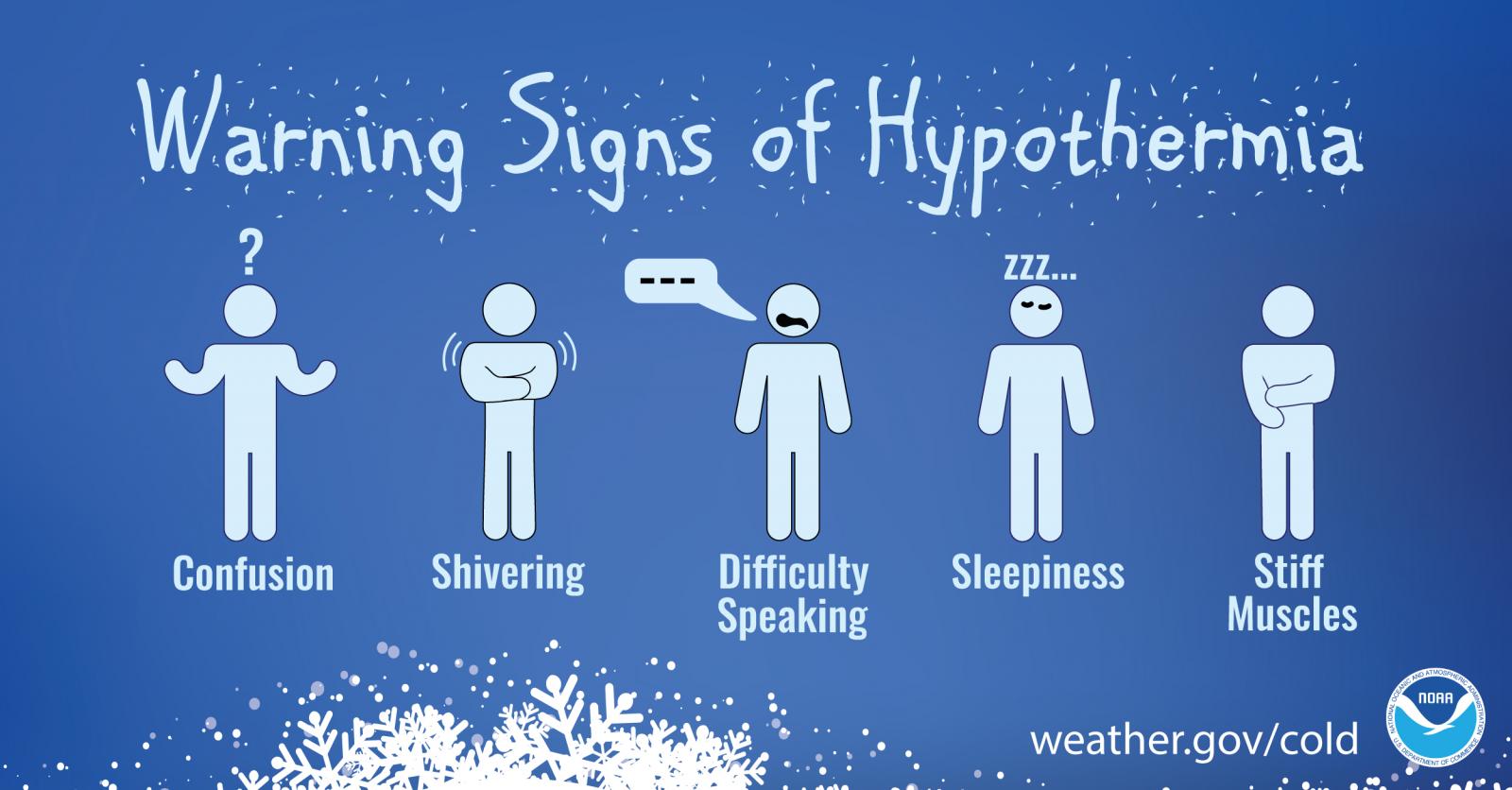
- Adults: shivering, exhaustion, confusion, fumbling hands, memory loss, slurred speech drowsiness
- Infants: bright red, cold skin, very low energy
Signs of Frostbite
Frostbite is a serious condition that’s caused by exposure to extremely cold temperatures.- a white or grayish-yellow skin area
- skin that feels unusually firm or waxy
- numbness
Visit the County’s Cold Weather and Hypothermia page for more information.
More Information
More information about winter weather preparedness can be found through the following links:

- Ready.gov
- Ready.gov Winter Weather
- Ready.gov News
- FEMA Videos
- Weather.gov
- CDC Winter Weather
- American Red Cross Winter Weather Resources
- Department of Health and Human Services Winter Weather Resources
- U.S. Fire Administration Severe Weather Fire Safety

